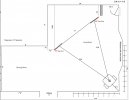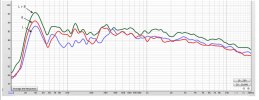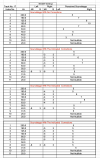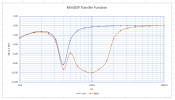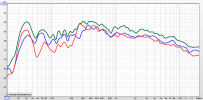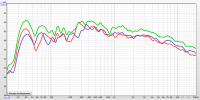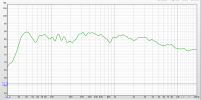Darra Pharma
Member
- Joined
- Oct 1, 2023
- Messages
- 8
- Likes
- 3
Hello All and Happy New Year,
The first attachment shows a diagram of my listening room. I know, other more traditional speaker and listener locations would be better, but this is also a family living room, and this just works best for us. The speakers are Magnepan 3.7i’s, with tweeters on the outside. I have been tweaking this arrangement for a few years now, moving speakers a foot or two in various directions, and adjusting toe-in. This arrangement provides pretty good sound, except, on most recordings, the stereo image seems to pull to the right. The second attachment shows the room’s response as measured with a calibrated mic and REW (Each trace representing the average of 9 measurements around a 28-inch diameter circle centered on the head of a seated listener). I noted the approximate 5dB difference in bass response between the left and right channels, and I am wondering if this might be causing the rightward pulling of the stereo image? If so, would putting a bass trap in the corner behind the right speaker improve the situation?
Thanks for any comments.
Darra
The first attachment shows a diagram of my listening room. I know, other more traditional speaker and listener locations would be better, but this is also a family living room, and this just works best for us. The speakers are Magnepan 3.7i’s, with tweeters on the outside. I have been tweaking this arrangement for a few years now, moving speakers a foot or two in various directions, and adjusting toe-in. This arrangement provides pretty good sound, except, on most recordings, the stereo image seems to pull to the right. The second attachment shows the room’s response as measured with a calibrated mic and REW (Each trace representing the average of 9 measurements around a 28-inch diameter circle centered on the head of a seated listener). I noted the approximate 5dB difference in bass response between the left and right channels, and I am wondering if this might be causing the rightward pulling of the stereo image? If so, would putting a bass trap in the corner behind the right speaker improve the situation?
Thanks for any comments.
Darra
